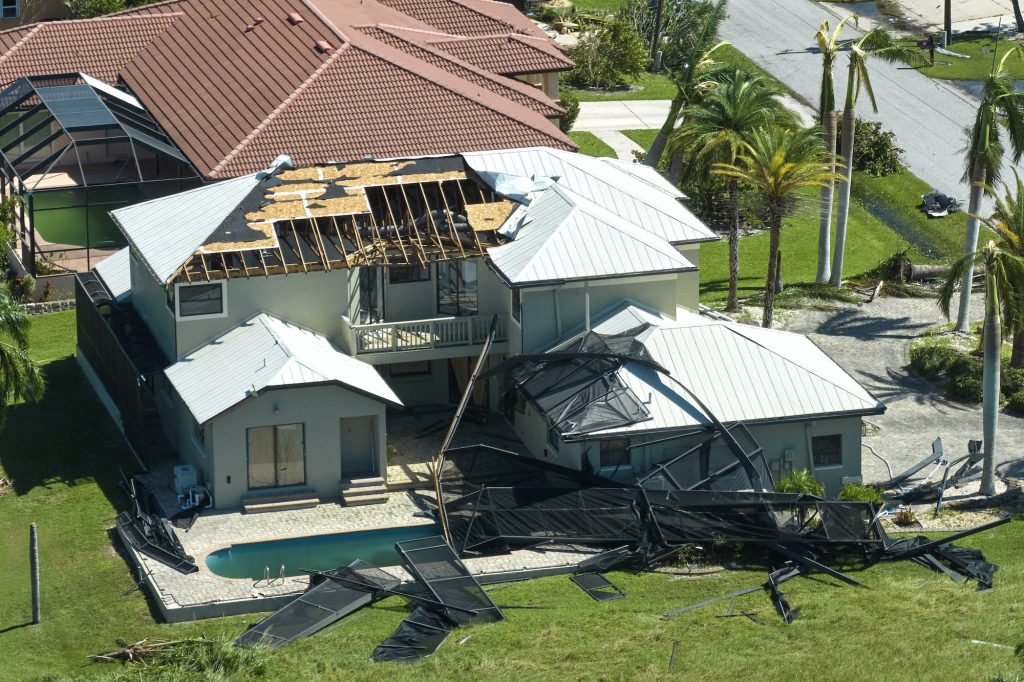Extreme weather events can cause significant damage to your home, especially your roof. From heavy rain to high winds, extreme weather can compromise the integrity of your roof, leading to leaks and even collapse. But, with proper preparation, you can minimize the damage caused by extreme weather events and keep your home and family safe. In this article, we’ll provide a step-by-step guide on how to prepare your roof for extreme weather events.

How to Inspect Your Roof for Damage Before Extreme Weather Hits
-Step 1: Check the Roof’s Age and Condition
The first step in preparing your roof for extreme weather is to check its age and condition. If your roof is more than 20 years old, it is more likely to suffer from wear and tear, which can make it more vulnerable to damage from extreme weather. Look for signs of decay, such as missing or damaged shingles, and make any necessary repairs before extreme weather arrives.
-Step 2: Check for Loose Shingles or Nails
Another common issue that can make your roof vulnerable to damage from extreme weather is loose shingles or nails. Check for any missing or loose shingles and make sure all nails are securely fastened. If you notice any missing or loose shingles, replace them immediately to prevent further damage.
-Step 3: Inspect the Flashing
The flashing around your roof’s vents and chimneys is another area that can be vulnerable to damage from extreme weather. Check the flashing for any signs of rust or decay, and make any necessary repairs to ensure it is secure.
-Step 4: Check the Gutters and Downspouts
Your gutters and downspouts play an important role in protecting your roof from damage from extreme weather. Make sure they are free of debris and securely fastened to your home. If you notice any damage to your gutters or downspouts, make any necessary repairs before extreme weather arrives.
How to Prepare Your Roof for Extreme Weather Events:
-Step 1: Trim Overhanging Branches
One of the easiest ways to prepare your roof for extreme weather is to trim any overhanging branches that could fall onto your roof during a storm. This can help prevent damage to your roof and minimize the risk of a tree falling on your home.
-Step 2: Secure Loose Objects
Another important step in preparing your roof for extreme weather is to secure any loose objects that could be blown away by strong winds. This includes anything from lawn furniture to trash cans. Make sure all loose objects are securely fastened to prevent them from becoming projectiles during a storm.
-Step 3: Reinforce Your Roof
If you live in an area that is prone to high winds, it may be necessary to reinforce your roof to prevent damage. This can include adding extra support to the roof trusses or installing hurricane straps to secure the roof to the walls.
-Step 4: Install a Roof Covering
Finally, if you want to further protect your roof from damage from extreme weather, consider installing a roof covering, such as a tarp or plastic sheeting. This can help keep your roof dry and prevent water damage during heavy rain.
FAQs
What is the best material for a roof in extreme weather conditions?
The best material for a roof in extreme weather conditions depends on the type of weather you experience in your area. For example, if you live in an area that experiences heavy rain, a roof made of metal or asphalt shingles is typically a good choice. If you live in an area prone to high winds, a roof made of impact-resistant materials, such as metal or tile, is recommended.
How often should I inspect my roof for damage?
It is recommended to inspect your roof at least once a year, or after any extreme weather event, to check for damage and make any necessary repairs. Regular inspections can help prevent small problems from turning into major issues that can compromise the integrity of your roof.
Can I prepare my roof for extreme weather events on my own?
Some steps, such as trimming overhanging branches and securing loose objects, can be done by homeowners. However, it is recommended to have a professional inspect your roof to check for any damage or potential weak spots that may need reinforcing.
Conclusion:
Preparing your roof for extreme weather events is an important step in protecting your home and family from damage. By following the steps outlined in this guide, you can minimize the risk of damage to your roof during extreme weather events. Regular inspections, making any necessary repairs, and taking preventative measures, such as installing a roof covering or reinforcing your roof, can help ensure that your roof is ready to withstand extreme weather. Remember, taking care of your roof now can save you time and money in the long run.
